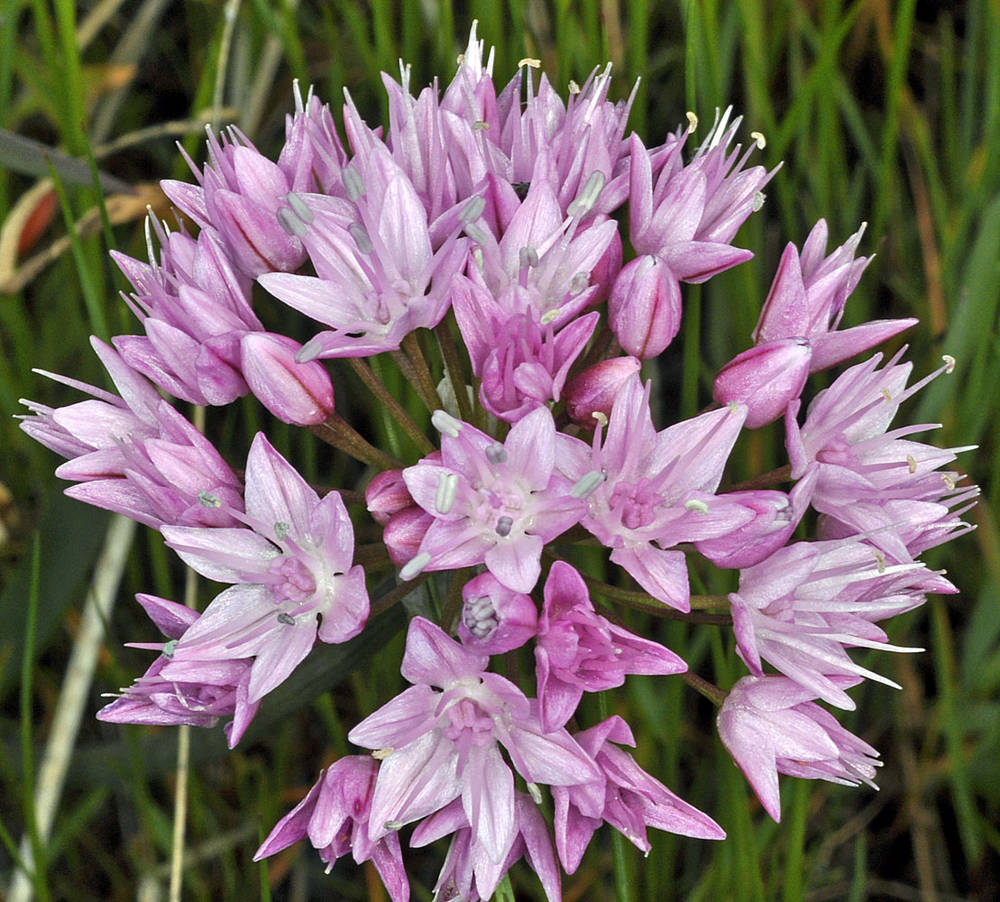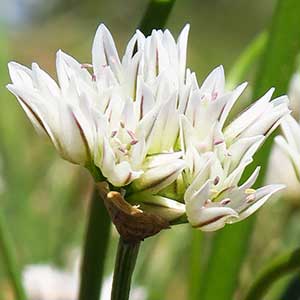Allium nevii
Allium fibrillum
Nevius' onion
fringed onion
1–5+; ovoid;
outer coats enclosing 1 or more bulbs, membranous; more or less reticulate;
cells quadrate to polygonal, vertically oblong; without fibers.
1–5+; without cluster of basal bulbils; more or less globose;
outer coats enclosing 1 or more bulbs; brownish, membranous, reticulate;
cells very fine, often obscure; narrow; more or less transversely elongate, intricately contorted; without fibers.
usually persistent, withering from tip at anthesis, 2;
blades solid; flat or more or less channeled, falcate, 12–25 cm × 2–3 mm.
usually persistent, withering from tip by anthesis, 2;
blades solid; flat; more or less falcate, linear, channeled, 7–24 cm × 0.5–3 mm.
persistent, 1–3; erect; solid; terete or somewhat flattened, 2-edged, not expanded proximal to inflorescence, 15–30 cm × 1–3 mm.
persistent; solitary; erect; solid; terete or slightly flattened to very narrowly winged, 3–15 cm × 0.5–2 mm.
persistent; erect; compact, 10–30-flowered, hemispheric;
pedicels 8–12 mm;
spathe bracts 2.
persistent; erect; compact, 10–20(40)-flowered, hemispheric to globose;
pedicels 3–10 mm;
spathe bracts 2.
6–8 mm;
tepals spreading, lanceolate; more or less equal; rose-colored;
margins entire;
apex acuminate;
stamens more or less equaling tepals, or exserted;
ovary distinctly crested with 6 low processes;
stigma unlobed.
5–8 mm;
tepals erect, lanceolate; more or less equal, white with prominent greenish or pink midribs;
margins entire;
apex obtuse to acuminate; more or less involute at tip;
stamens included;
ovary crestless or obscurely crested with 3 low processes;
stigma unlobed.
=14.
=14.
Allium nevii
Allium fibrillum
Wet meadows and along streams, in rocky clay soils, seasonally moist scablands. Flowering Apr–Jun. 0–1200 m. Col, ECas. WA. Native.
Moist, shallow soils in rocky openings and grasslands in conifer woodlands. Flowering May–Jul. 800–2600 m. BW. WA; northeast to MT. Native.
Morphologically, A. fibrillum is similar to A. madidum. The latter, however has a basal cluster of bulbils.
Nick Otting, Richard Brainerd, Barbara Wilson
Nick Otting, Richard Brainerd, Barbara Wilson





